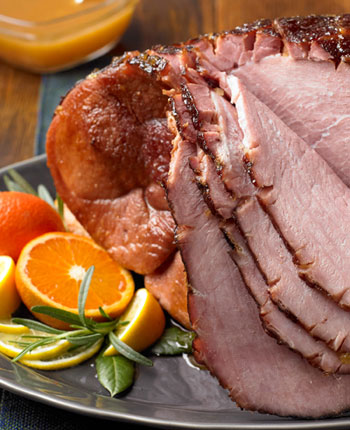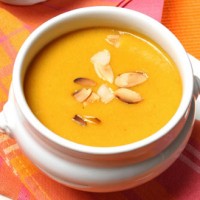Healthy Weight, Healthy Mind: Tips for Eating Smart, Part 1
We are pleased to bring you this regular column by Dr. David Creel, a licensed psychologist, certified clinical exercise physiologist and registered dietitian. He is also credentialed as a certified diabetes educator and the author of A Size That Fits: Lose Weight and Keep it off, One Thought at a Time (NorLightsPress, 2017). See all of David Creel’s articles here.
Although people who lose weight in a healthy way and keep it off don’t eat exactly the same way, we know that eating within a certain framework will promote health and increase your likelihood of success. The following recommendations are consistent with The Dietary Guidelines for Healthy Americans. You can safely follow these guidelines to lose weight and keep it off in a healthy manner. Of course, if you have a medical condition that requires a special diet, you should consult a registered dietitian.
1. Eat Foods from Each Food Group
Over the past 60 years The United States Department of Agriculture has promoted healthy eating through The Basic Four Food Groups, The Food Guide Pyramid, MyPyramid and MyPlate. Even though the recommendations change slightly over time, research continues to support the importance of eating a variety of foods from different food groups. In order to avoid malnutrition, people either have to eat this way or take supplements. Although supplements can play a role in our health, especially for people who have malabsorption issues, food allergies, or intolerances, relying on supplements for health and nutrition isn’t ideal.
Scientists are still discovering compounds in foods that may help prevent diseases such as cancer and heart disease. Since we still don’t know how all of this works, we can’t simply pull out all the beneficial compounds in foods and put them into a pill. For instance, fruits and vegetables contain many phytochemicals (plant chemicals) that play a role in preventing cell damage or assist in health-promoting enzymatic reactions. A typical multivitamin doesn’t contain these phytochemicals. Frozen pizza, chicken nuggets, and a handful of supplements are not equal to a diet rich in vegetables, fruit, lean protein sources, whole grains, and low-fat dairy. When we eat selections from all the food groups we naturally maintain a reasonable balance between protein, carbohydrate and fat, and we’re likely to consume adequate amounts of vitamins and minerals. People who undergo bariatric surgery are an exception and require vitamin/mineral supplementation.
2. Eat Different Kinds of Vegetables, and Lots of Them
Eating a variety of vegetables is not only good for you; it also makes weight management easier. Vegetables, especially the non-starchy ones, are mostly water. Chewing these water-filled nutrition giants will help you feel satisfied on fewer calories. Suppose you’re having a turkey sandwich for lunch and decided to have a two-ounce bag of potato chips along with it. The chips contain about 300 calories and 20 grams of fat. If instead you chose to eat raw cauliflower, you could eat two small heads, or about 100 florets, for 300 calories. Of course you’d end up eating much less than that, and therefore consume fewer calories.
3. Ditch the Sugar-Sweetened Beverages
This is easier said than done for many people. I’m not generally one to promote absolutes when it comes to diet. In fact, I often try to help patients eat problem foods in moderation rather than avoid them altogether. But for the person who drinks multiple regular sodas every day and describes it as an addiction, abstinence is probably the best goal. Why the different approaches with food versus drinks? The healthfulness and allure of most sugar-containing foods vary a great deal. For instance, if someone tells me he’s “addicted to sweets,” I don’t really know what that means. Anything with sugar, like canned corn and pickled beets? Is a graham cracker a sweet, or how about a macaroon? You get the point. With drinks, the categories are easier. Either it’s a regular soda or it’s not.
People who regularly drink sugar-sweetened beverages often follow patterns like people with addictions, such as smoking. A smoker may always smoke at certain times of day, and soda drinkers often have similar patterns they find hard to break. Studies suggest that regularly consuming sugar-sweetened beverages probably doesn’t impact everyone’s weight in the same way. The people most likely to gain weight are those with a genetic predisposition for obesity. If you have certain obesity promoting genes (many different genes influence body weight), it’s a bad idea to regularly drink sugary beverages. You’re like a person with a genetic tendency for asthma who lives in a polluted city. Just as it may be best for that person to find a better place to live, you may want to consider avoiding sugar-sweetened drinks. Although water is probably the best replacement, drinking liquids with artificial sweeteners will greatly reduce calories and can help you lose weight.
4. Eat Your Fruit, Don’t Drink It
Fruit is also relatively low in calories and packed with nutrients. Many well-intentioned people drink fruit juice rather than other sugar-sweetened beverages in an attempt to be healthier. Although fruit juice is more nutritious than soda, the calories are about the same. In addition, research is clear that chewing food makes us feel more satiated than drinking those same calories. Let’s say you typically feel satisfied after eating a breakfast including two eggs, two slices of toast, and a twelve-ounce glass of orange juice. If you substituted water for orange juice and ate a clementine instead, you could save calories. In fact, you would need to eat five clementines to equal the calories in twelve ounces of orange juice.
Next week, I’ll share a few more tips to help you devise a healthy eating plan.
Come back each week for more healthy weight loss advice from Dr. David Creel.
Gingered Pork and Melon Salad
Pork poached in ginger and orange juice is the center of this summer dinner salad. Serve with hot French bread.
Gingered Pork and Melon Salad
(Makes 4 servings)
Prep Time: 5 minutes
Cook Time: 15 minutes
Ingredients
- 1 pound boneless pork loin, cut into ½-inch cubes
- ½ cup orange juice
- 2 tablespoons ginger, grated
- 2 cups melon balls, cantaloupes, watermelon, honeydew or a mixture
- 1 papaya, peeled, seeded and cubed
- 2 tablespoons Grand Marnier or other orange liqueur
- 6 cups mixed salad greens
- ½ cup peach yogurt
Directions
- In medium saucepan combine orange juice and ginger; bring to a simmer and add pork cubes. Simmer for about 5 minutes, until pork is cooked. Remove pork and remaining liquid to bowl, refrigerate uncovered to cool slightly, about 5–10 minutes.
- In medium bowl gently toss together melon, papaya, Grand Marnier, pork cubes, and cooking liquid. On each of four plates place 1 ½ cups salad greens. Serve equal portions pork-melon mixture atop greens, topped with 2 tablespoons yogurt.
Nutrition Facts
Per serving
Calories: 310
Total fat: 9 g
Saturated fat: 3 g
Carbohydrate: 27 g
Fiber: 4 g
Protein: 28 g
Sodium: 85 mg
Recipe and photo courtesy of the National Pork Board.
Spiced Grilled Ham with Citrus Glaze
“Turning to the grill offers home cooks an easy and perhaps unexpected way to treat guests this year,” says Pamela Johnson, Director of Consumer Communications for the National Pork Board, which offers this alternative to the traditional baked ham. “Grilled ham is a twist on the classic preparation that complements a variety of dishes, like roasted potatoes and asparagus spears, at any celebration or future feast.”
To make the recipe your own, try using a different combination of juice and jam, jelly, or marmalade for the glaze—apple juice and grape jelly, orange juice and strawberry jam, or apricot nectar and orange marmalade.
Spiced Grilled Ham with Citrus Glaze

Makes 12 to 14 (4-ounce) servings
Prep time: 15 minutes
Cook time: 1 ½ to 2 hours
Ingredients
- 6 to 7 pound fully cooked bone-in ham, trimmed
- 1 tablespoon ground coriander
- 1 tablespoon ground paprika
- 1 teaspoon ground cumin
- ½ teaspoon ground cinnamon
- ¼ teaspoon ground cloves
- ¼ cup lemon marmalade*
- 2 tablespoons orange juice
- 2 tablespoons packed brown sugar
* If you can’t find lemon marmalade, substitute another citrus marmalade.
Grilling Directions
- Preheat gas or charcoal grill to medium-hot (375 to 425°F). Prepare grill for indirect cooking: For gas grill, turn off center burner; for charcoal grill, bank coals on either side; place drip pan under grate between heat sources.
- Score diamond pattern into ham, about ⅛-inch deep into any fat. In small bowl, combine coriander, paprika, cumin, cinnamon, and cloves. Rub spice mixture over all sides of ham. Place ham, flat side down, in center of grill over drip pan. Cover and cook, adding briquettes to charcoal grill as necessary to maintain heat, until internal temperature of ham reaches 140°F, 1 ½ to 2 hours or 15 to 18 minutes per pound.
- Meanwhile, in small bowl, combine marmalade, orange juice, and sugar.
- Brush marmalade mixture over ham. Cover and grill 5 minutes, until glaze is lightly caramelized. Remove ham from grill, transfer to cutting board, and let rest 15 to 30 minutes before cutting.
Roasting Directions
- Preheat oven to 400°F. Position rack in lower third of oven.
- Score diamond pattern into ham, about ⅛-inch deep into any fat. In small bowl, combine coriander, paprika, cumin, cinnamon, and cloves. Rub spice mixture over all sides of ham. Place ham, flat side down, in large shallow roasting pan and cook until internal temperature of ham reaches 140°F, 1 ½ to 2 hours or 15 to 18 minutes per pound.
- Meanwhile, in small bowl, combine marmalade, orange juice, and sugar.
- Brush marmalade mixture over ham. Return to oven and roast 5 minutes, until glaze is lightly caramelized. Remove ham from oven, transfer to a cutting board, and let rest 15 to 30 minutes before cutting.
Nutrition Facts
Per Serving
Calories: 270
Total fat: 11 g
Saturated fat: 4 g
Carbohydrate: 7 g
Fiber: 0 g
Protein: 34 g
Sodium: 80 mg
Recipe and photo courtesy of the National Pork Board.
Peach Soup
Soup’s on! Only it’s not what you think … We’re cooling things down with some refreshing treats. If you like this recipe, don’t miss our chilled-out garden party recipes.
Peach Soup

Makes 4 servings
- 3 cups peaches, peeled and chopped
- 1 cup nonfat plain Greek yogurt
- 2 tablespoons orange juice
- 1/4 teaspoon vanilla extract
- 1/4 cup sliced almonds, toasted
- Fresh mint or cinnamon
In food processor, combine peaches, yogurt, orange juice (note: adjust amount of orange juice for consistency), and extract. Chill for several hours in refrigerator. Serve topped with toasted almonds and garnish.
